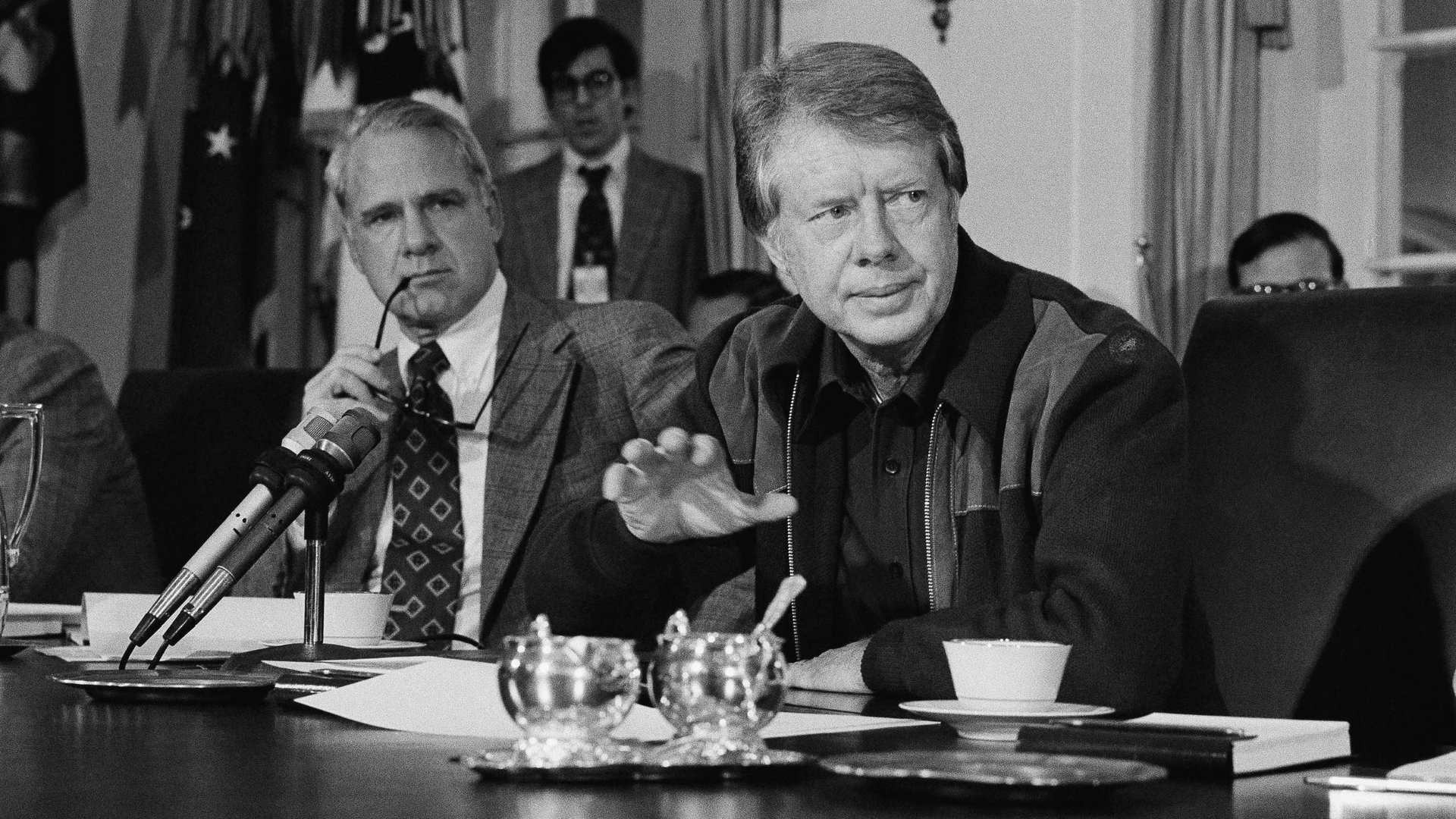Americans under 40 are going to have to learn what inflation means for the first time in their lives
There is a major generational divide in America: About half of the US population (pretty much everyone under 40) can’t remember a time when people worried about inflation. Now would be a good time for them to brush up on it.


There is a major generational divide in America: About half of the US population (pretty much everyone under 40) can’t remember a time when people worried about inflation. Now would be a good time for them to brush up on it.
Since the 1980s, inflation has been low and fairly predictable.
Now inflation is coming back. Current inflation is still low, less than 1.5% last year. But it rose in the second half of 2016. And the Congressional Budget Office expects inflation to increase over the next two years as the economy gains steam, predicting it will stabilize around 2%, the Federal Reserve’s inflation target.
Professional forecasters also expect higher inflation, potentially increasing to 2.5%. At this stage, the risk of runaway US inflation appears nonexistent, and under 3% is relatively low by historically standards. But inflation unpredictability can be just as bad for an economy as high inflation. Unpredictability might mean the inflation rate swings around month-to-month, or it could just mean forecasts are unreliable because we get bouts of inflation they didn’t predict. In either case, it is difficult to know how much your money will be worth and make long-term spending decisions—especially for businesses.
Inflation expectations have been rising since Trump’s election
Inflation is determined by many factors: the scarcity of goods, exchange rates, economic activity, monetary policy, and our expectations. Inflation expectations are often self-fulfilling because we negotiate wage contracts and set prices based on what we think inflation will be in the future.
One indicator of inflation expectations is the 10-year breakeven rate. A breakeven is the difference between regular and inflation-linked US government bonds, and reflects the market’s expectation for inflation over the next 10 years. It has been rising since the 2016 election.
The increase in the breakeven rate means investors expect higher inflation, or they sense more uncertainty around what future inflation will be.
Why inflation risk has gone up
We face more inflation uncertainty because several of president Donald Trump’s policies could be inflationary:
- Cutting back on trade means fewer imports, which means higher prices.
- More geopolitical risk and withdrawing from the world could mean foreign governments and investors will buy less debt. That would weaken the dollar and make the remaining imports even more expensive.
- Infrastructure spending could boost short-term growth. But that also comes with more activity that increases businesses’ pricing pressure and stokes inflation.
- The Fed has tools to keep inflation in check, but that means cooling the economy. It may face political pressure to resists that.
This is all speculation. The one certainty is more uncertainty and that means the potential for more inflation risk.
Are we ready for it?
If inflation follows the CBO forecast and levels off around 2%, we may have another 30 years of low, stable inflation. Or, if we are entering a period of uncertainty and global economic retreat, prices may also become unpredictable. That uncertainty poses a cost to the economy. Volatile inflation makes it harder for households and firms to plan expenditures and investments.
Years of complacency may leave people unexpectedly exposed to inflation. For example, some state pension funds cut inflation benefits to lower their debt burdens. In a low-inflation, low volatility environment, it did not seem like a big deal, but it could harm retirees if inflation picks up.
What investments traditionally do well amid rising inflation
Stocks, real estate and gold are traditionally how people hedge inflation risk. But each of these assets comes with its own risks, over and above inflation.
The chart below plots the monthly change in gold prices, stocks and inflation. There is a correlation, but stocks and gold prices are much more volatile than movements in inflation.
Even if the price of gold keeps up with inflation, owning gold exposes you to other, far bigger risks.
The simplest way to hedge inflation is with Treasury Inflation-Protected Securities (TIPS), inflation swaps, or any asset that offers explicit inflation protection. With TIPS, for example, the amount you invest is adjusted based on consumer inflation rates over the life of your investment.
It may seem like you don’t need to worry about inflation, because the level is expected to stay relatively low. But it is still prudent to watch out for more risk and uncertainty associated with inflation. Because more uncertainty means the inflation outlook can change suddenly; a 3% forecast may turn into a 5% forecast before you have a chance to prepare.
A good rule of thumb is anytime someone tells you they’ve eliminated any kind of risk, in financial markets or warfare, that risk is about to blow up. Inflation could be next.